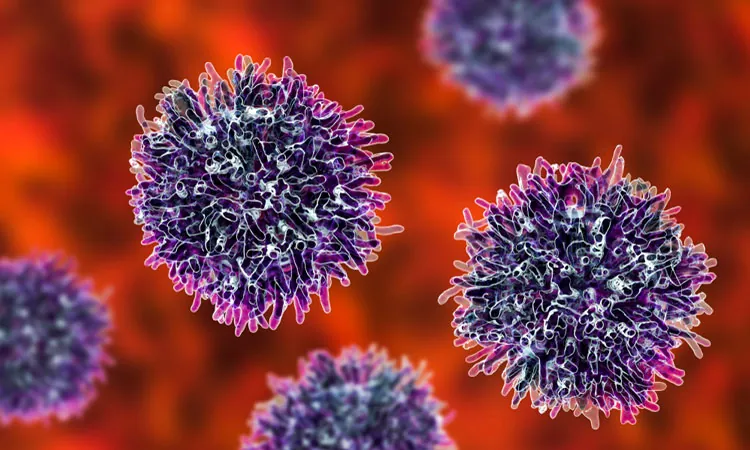
Revolutionary Technique Tracks Boron in Live Tumor Cells to Boost Cancer Therapy
2025-09-12
Author: Ming
In a groundbreaking advancement, researchers at the University of Birmingham have unveiled a cutting-edge technique to monitor boron levels within live tumor cells. This innovation promises to significantly enhance the effectiveness of Boron Neutron Capture Therapy (BNCT) for treating head and neck cancers.
According to data from Cancer Research UK, head and neck cancers rank as the 8th most common type of cancer in the UK, accounting for around 3 percent of new cancer cases reported between 2017 and 2019.
Measuring Boron Uptake Like Never Before
For the first time, scientists can now accurately measure how much boron penetrates individual cancer cells, drastically deepening our understanding of how therapeutic drugs combat tumors. Their groundbreaking study, published in the Journal of Analytical Atomic Spectrometry, employed a sophisticated technique known as single-cell inductively coupled plasma mass spectrometry (ICP-MS). This method allows real-time monitoring of boron absorption and expulsion in living tumor cells.
Enhancing Boron Neutron Capture Therapy
Boron Neutron Capture Therapy is an innovative precision treatment for head and neck cancer. Patients administer a boron-rich drug that selectively targets tumor cells. When subjected to neutron irradiation, the boron interacts to destroy cancer cells while preserving surrounding healthy tissue. The efficacy of BNCT hinges on ensuring that sufficient boron reaches the tumor cells and remains there until the neutron irradiation is applied.
The breakthrough achieved by the University of Birmingham researchers provides critical insights that could optimize this crucial process.
Dr. James Coverdale, from the School of Pharmacy, stated, "Previously, we could only measure average boron uptake across large populations of cells, which overlooked significant variations among individual cells. Our single-cell approach uncovers this variability, a key factor in treatment effectiveness in a heterogeneous tumor environment."
Surmounting Technical Challenges
Among the major achievements of this study was the development of optimal conditions to keep cancer cells viable long enough for accurate measurement. The team had to fine-tune the cell culture medium and devise a method to introduce these living cells into the highly sensitive single-cell ICP-MS apparatus. Without these critical adjustments, cells would decay too rapidly to yield meaningful results.
Paving the Way for Precision Cancer Treatment
This significant study marks a stride towards more precise oncology, offering essential insights into how boron behaves at the single-cell level. The findings could fundamentally shift the future landscape of BNCT. As researchers continue to refine drug design and timing of treatments, patients battling head and neck cancers stand to gain access to more targeted therapies.
As Jack Finch, co-first author and biochemistry alumnus at the University of Birmingham, emphasized, "This will be critical for evaluating and comparing future BNCT drugs, guiding us to identify the most effective treatments. Ultimately, our work aims to enhance the already promising potential of BNCT into a highly precise and effective cancer treatment strategy."


 Brasil (PT)
Brasil (PT)
 Canada (EN)
Canada (EN)
 Chile (ES)
Chile (ES)
 Česko (CS)
Česko (CS)
 대한민국 (KO)
대한민국 (KO)
 España (ES)
España (ES)
 France (FR)
France (FR)
 Hong Kong (EN)
Hong Kong (EN)
 Italia (IT)
Italia (IT)
 日本 (JA)
日本 (JA)
 Magyarország (HU)
Magyarország (HU)
 Norge (NO)
Norge (NO)
 Polska (PL)
Polska (PL)
 Schweiz (DE)
Schweiz (DE)
 Singapore (EN)
Singapore (EN)
 Sverige (SV)
Sverige (SV)
 Suomi (FI)
Suomi (FI)
 Türkiye (TR)
Türkiye (TR)
 الإمارات العربية المتحدة (AR)
الإمارات العربية المتحدة (AR)